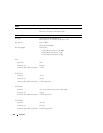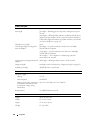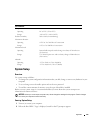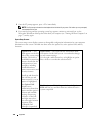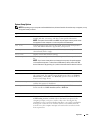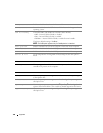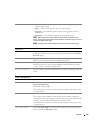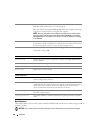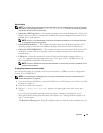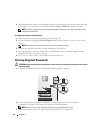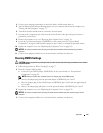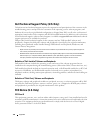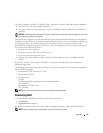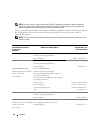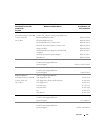
130 Appendix
Boot Sequence
This feature allows you to set the order in which the BIOS will search devices when trying to find an
operating system.
NOTICE: If you modify any boot sequence settings, save the new settings to avoid losing the changes.
Remote Wake Up This option allows the computer to power up when a NIC or Remote
Wakeup-capable modem receives a wake up signal.
On is the default setting. On w/ Boot to NIC allows the computer to attempt
to boot from a network prior to using the boot sequence.
NOTE: Normally, the system can be powered up remotely from suspend mode,
hibernate mode, or when powered off. When Low Power Mode (in the Power
Management menu) is enabled, the computer can only be powered up remotely
from Suspend.
Suspend Mode The options are S1, a suspend state where the computer is running in a low-
power mode, and S3, a standby state where the power is reduced or turned off
for most components, however, system memory remains active.
Quick Resume This feature enables/disables the Intel
®
Viiv™ Quick Resume Technology.
The default setting is Off.
Maintenance
Service Tag Displays the system service tag which is a unique seven-digit alphanumeric
system identifier.
SERR Message Controls SERR message mechanism to support some add-in cards.
Load Defaults Allows you to reset all options in the setup menu to the factory default.
Event Log Displays the system event log.
POST Behavior
Fastboot When set to On (default), your computer starts more quickly because it skips
certain configurations and tests.
Numlock Key This option involves the rightmost bank of keys on your keyboard. When set
to On (default), this option activates the numeric and mathematical features
shown at the top of each key. When set to Off, this option activates the
cursor-control functions labeled on the bottom of each key.
POST Hotkeys This option allows you to specify the function keys to display on the screen
when the computer starts.
Keyboard Errors This option disables or enables keyboard error reporting when the computer
starts.



